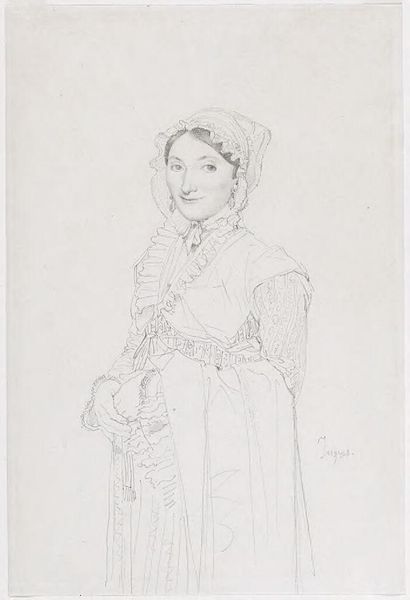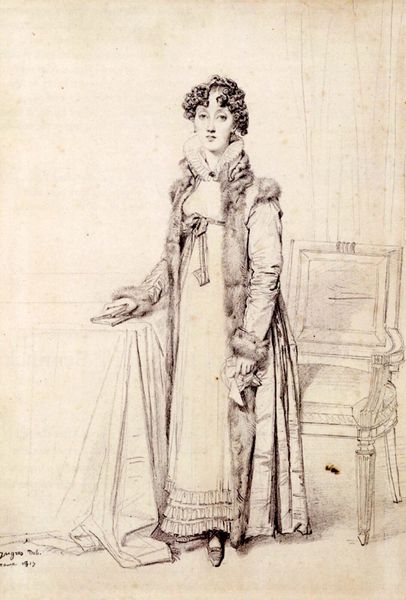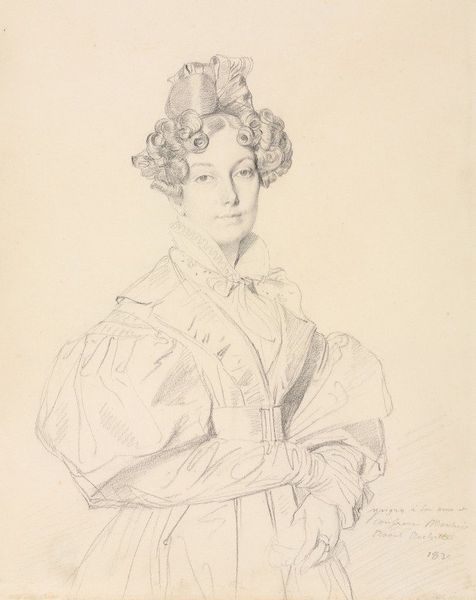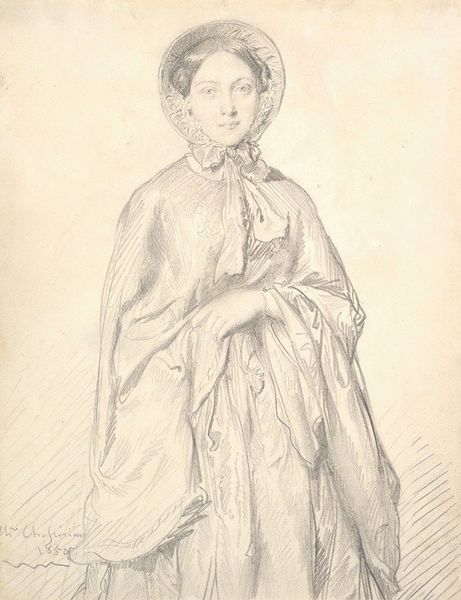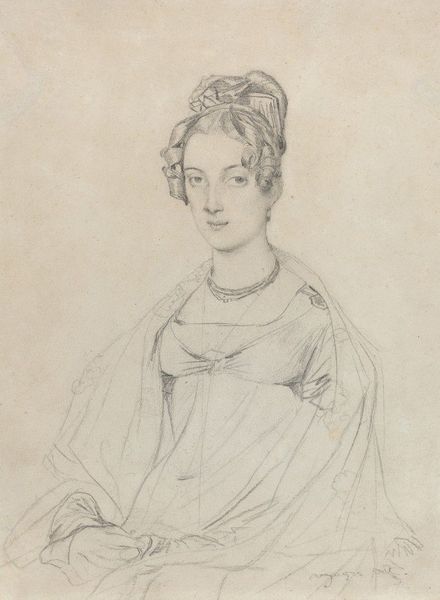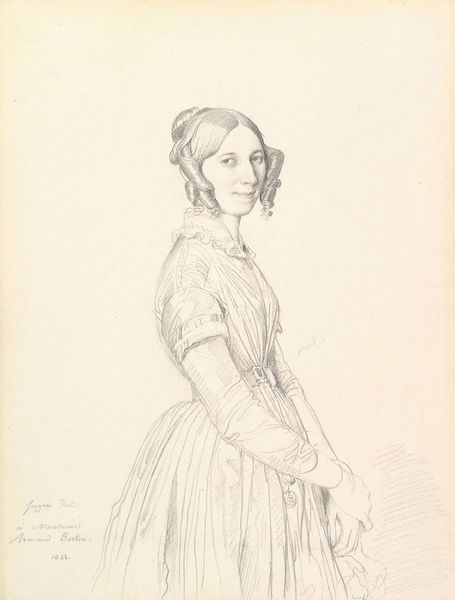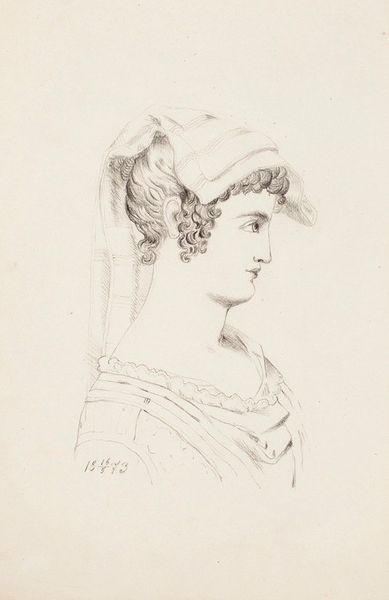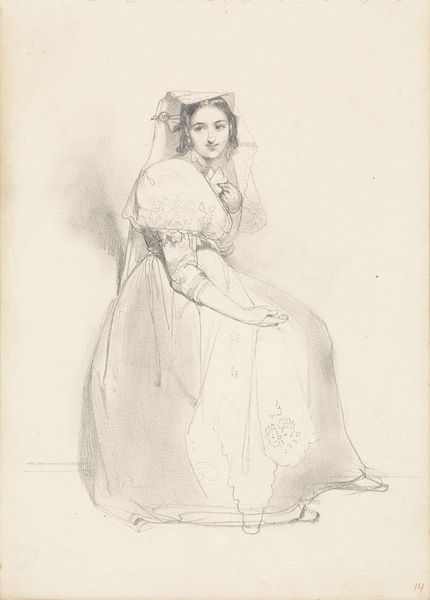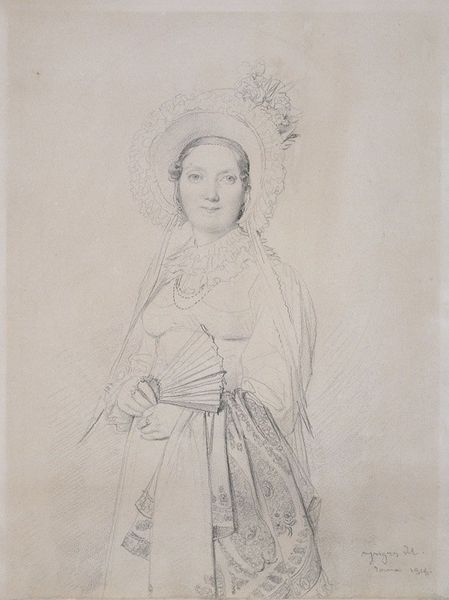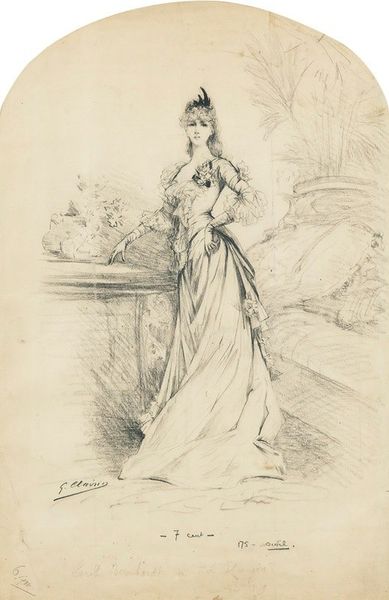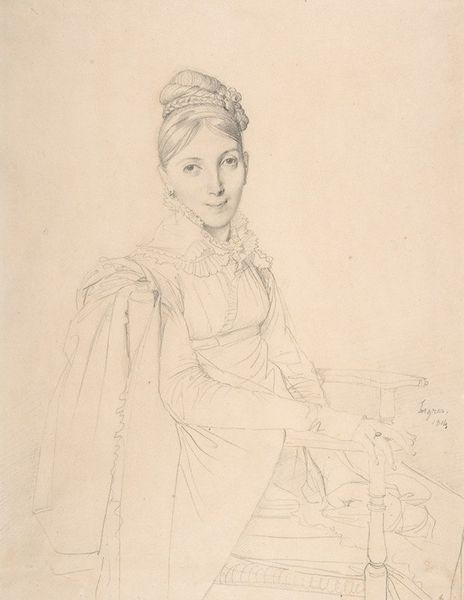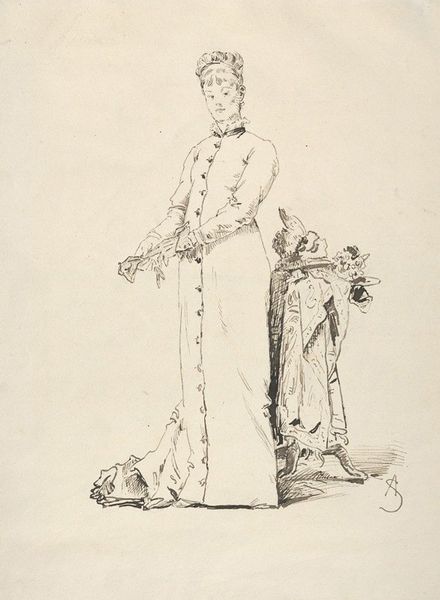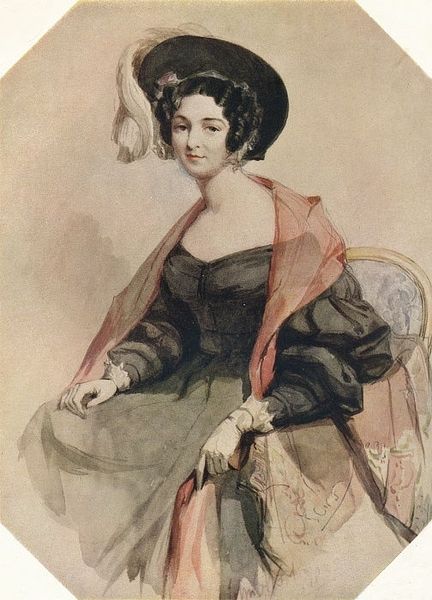
drawing
#
drawing
#
amateur sketch
#
facial expression drawing
#
light pencil work
#
pencil sketch
#
portrait reference
#
idea generation sketch
#
pencil drawing
#
portrait drawing
#
pencil work
#
initial sketch
Copyright: Public Domain: Artvee
Curator: Let’s turn our attention to this pencil drawing, "Portrait of a Lady," by Jean-Auguste-Dominique Ingres, dating from around 1815 to 1817. Editor: The initial impression is light and airy. It feels like a fleeting moment captured, the delicate lines giving the woman an almost ethereal quality. There is also something about her posture and clothing suggesting material wealth but simultaneously, an understated quality to the workmanship that feels... different than typical upper class portraits of that era. Curator: Absolutely, Ingres was deeply engaged with Neoclassicism, a movement influenced by the art of classical antiquity, but as we can see here it also reflects social changes in the post-Revolutionary period, where there was still clearly high society and its associated wealth, though in new manifestations of culture and dress. The composition and the light pencil work are important to understand that time period. Editor: For me, it’s the details that speak volumes about material conditions: the paper itself, likely high-quality rag paper sourced from a specific mill, the graphite pencil, its lead carefully mined and processed. The labor involved, from the manufacture of these materials to Ingres’s skilled hand—it’s all interwoven. Did he even consider the raw resources when creating such work or only think about a fine representation of his wealthy clientele? Curator: Well, artists of that era often worked with specific suppliers and patrons, so material availability and cost would definitely have played a role in the final product. We can definitely see from this work that Ingres seemed to be mindful of capturing this woman in a new light which likely required various resources and social gatherings. Editor: Look at the ruffled collar. Lace making was a labor intensive industry. Its presence isn’t merely decorative; it tells us about access to specialized skills, possibly exploitation, and an intricate network of trade that often went unnoticed when only evaluating "high" art. Curator: Very true. We see the portrait now primarily as a symbol of status and, on some level, artistic style but in the context of early 19th-century society, you’re highlighting it was enmeshed in webs of economic and social interactions and class systems. Editor: Precisely. It reminds us that even seemingly simple pencil drawings carry within them the echoes of labor and material histories and their environmental origins. Curator: Indeed. This look has afforded a broader perspective on the subject herself and on Ingres as an artist reflecting a time of social transition.
Comments
No comments
Be the first to comment and join the conversation on the ultimate creative platform.
